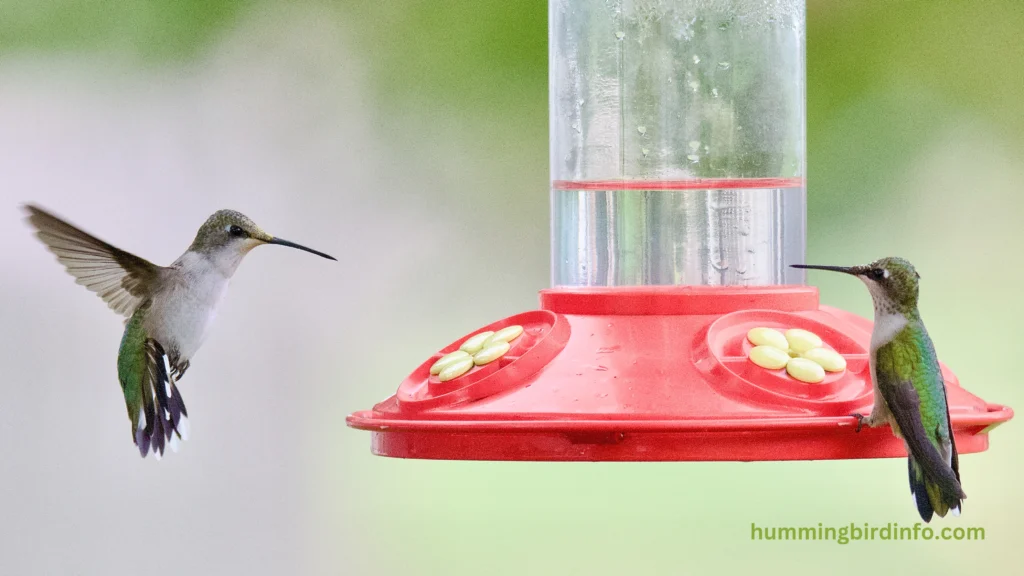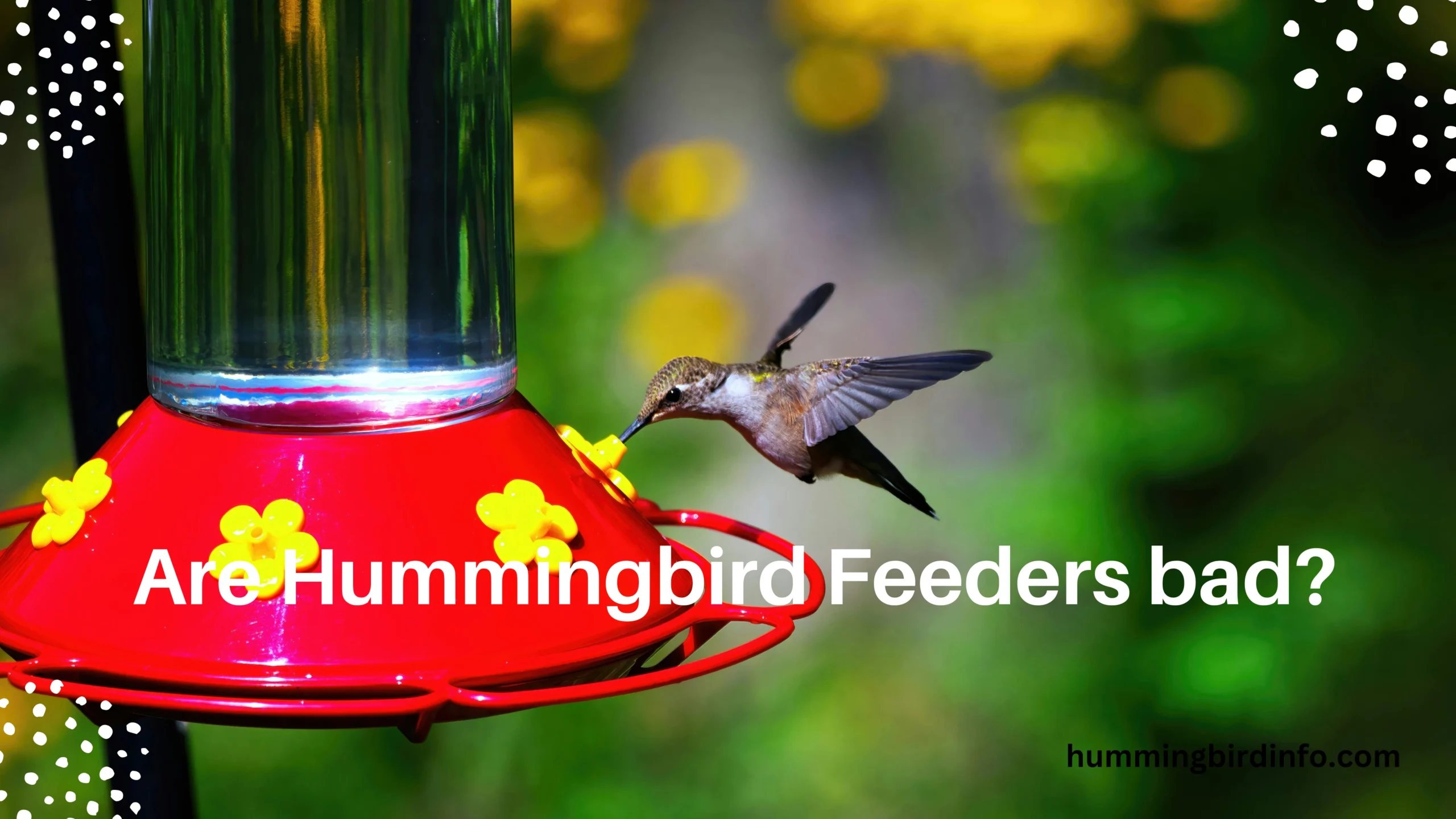Hummingbirds are some of the most beloved backyard visitors, bringing a burst of color and energy wherever they go. Many people set up hummingbird feeders to invite these winged jewels closer, hoping to enjoy their presence up close.
These feeders have become a popular part of gardens across North America, offering a sense of joy and connection to nature.
But behind this seemingly innocent act lies a growing debate among bird lovers and scientists. Are hummingbird feeders really good for the birds—or could they be doing more harm than good? From potential disease risks to changes in natural behavior, there’s a lot to unpack.
In this blog post, we’ll explore both sides of the story. We’ll break down the potential risks, the benefits, and how to use feeders responsibly. Whether you’re a seasoned birder or just starting out, this guide will help you make the best choices for your tiny feathered friends.
Contents
Potential Health Risks from Feeders
Disease Transmission
- Dirty feeders can become breeding grounds for bacteria and fungi.
- Illnesses like candidiasis can make a hummingbird’s tongue swell, preventing feeding.
- Frequent contact between birds at feeders increases the spread of infections.
Harmful Ingredients
- Honey ferments quickly and promotes mold growth.
- Artificial sweeteners offer no nutrition and may contain harmful chemicals.
- Red dye, once common in nectar, can be toxic and unnecessary.
Nutritional Imbalance
- Feeders lack essential proteins found in insects, a key part of the diet.
- A diet of only sugar water may cause health problems, especially in breeding season.
- Natural nectar provides more balanced nutrients than artificial feeders.
Behavioral and Ecological Concerns
Dependence on Feeders
- Birds may become too reliant on feeders for food.
- This could affect their natural foraging behavior and survival skills.
- However, most studies show that feeders generally act as supplements, not replacements.
Territorial Aggression
- Feeders often lead to aggressive behavior among hummingbirds.
- Dominant birds may chase away others, limiting access to food.
- This stress uses up valuable energy the birds need for survival.
Impact on Migration
- Feeders do not stop hummingbirds from migrating.
- Migration is driven by daylight changes, not food availability.
- But feeders may affect timing if birds delay departure due to easy food.
Effects on Pollination
- Hummingbirds are vital pollinators for many plants.
- Feeders may reduce visits to natural flowers, disrupting ecosystems.
- Over time, this can alter plant reproduction patterns.
The Benefits of Hummingbird Feeders

Supplemental Food Source
- Feeders offer a critical food source during migration or poor blooming seasons.
- Early spring and late fall can be challenging times for food availability.
- During drought or habitat loss, feeders can help fill the gap.
Supporting Urban Hummingbirds
- Urban areas often lack native nectar plants.
- Feeders provide a way to support hummingbirds in cities and suburbs.
- They may help sustain urban populations over time.
Educational Opportunities
- Feeders allow for close observation, sparking curiosity and learning.
- They help people understand the needs and beauty of hummingbirds.
- Awareness leads to more support for conservation.
Economic Benefits
- The feeder industry supports local economies through sales and tourism.
- Garden centers and bird shops thrive thanks to hummingbird enthusiasts.
- Educational programs and eco-tourism also benefit communities.
Guidelines for Responsible Feeder Use
Proper Cleaning and Maintenance
- Clean feeders every 2–3 days, more often in hot weather.
- Use a vinegar and water solution or mild dish soap—no bleach.
- Always rinse thoroughly to avoid chemical residue.
Correct Nectar Solution
- Use a mix of 1 part white sugar to 4 parts water—boiled and cooled.
- Avoid honey, red dye, or artificial sweeteners as they are harmful.
- Do not overfill—small amounts are safer and easier to maintain.
Feeder Placement
- Hang feeders in shaded areas to slow spoilage.
- Keep feeders away from windows to prevent collisions.
- If using multiple feeders, space them out to reduce fighting.
Monitoring and Observation
- Watch for signs of sick birds—swollen tongues, lethargy, or puffed-up feathers.
- Remove feeders if illness spreads, and clean thoroughly.
- Keep a journal to track visitors and changes in behavior.
Complementary Strategies
- Plant native flowers to support hummingbirds naturally.
- Provide clean water sources like birdbaths or misters.
- Reduce or eliminate pesticide use to protect insect food sources.
Conclusion
Hummingbird feeders are a double-edged sword. They can offer essential support, especially during migration and in urban areas, but they also carry risks if not used properly. From disease transmission to altered behaviors, the impact of feeders depends on how they’re maintained.
The good news is that with responsible practices, most of these risks can be avoided. By cleaning feeders regularly, using the right nectar, and placing them thoughtfully, we can turn a simple backyard activity into a meaningful act of conservation.
Supporting hummingbirds goes beyond feeders. Planting native flowers, avoiding harmful chemicals, and preserving their habitats are all key steps. With a balanced approach, we can continue enjoying these magical birds while also protecting their future.
FAQ’s
1. Is red dye safe for hummingbirds?
No. Red dye is unnecessary and may be harmful to hummingbirds’ health. Use clear nectar made from white sugar and water.
2. How often should I clean my feeder?
Clean feeders at least every 2–3 days, especially in hot weather, to prevent the growth of mold and bacteria.
3. Can feeders stop hummingbirds from migrating?
No. Migration is triggered by daylight, not food. Feeders do not prevent migration, though they can help during the journey.
4. What’s the correct nectar recipe?
Mix 1 part white sugar with 4 parts water. Do not use honey, brown sugar, or artificial sweeteners.
5. Should I take down feeders in fall?
Only if all hummingbirds have left your area. Keeping feeders up can help late migrants refuel on their way south.
6. Do feeders make hummingbirds aggressive?
Yes, feeders can lead to increased territorial behavior. Providing multiple feeders spaced apart can reduce fighting.








